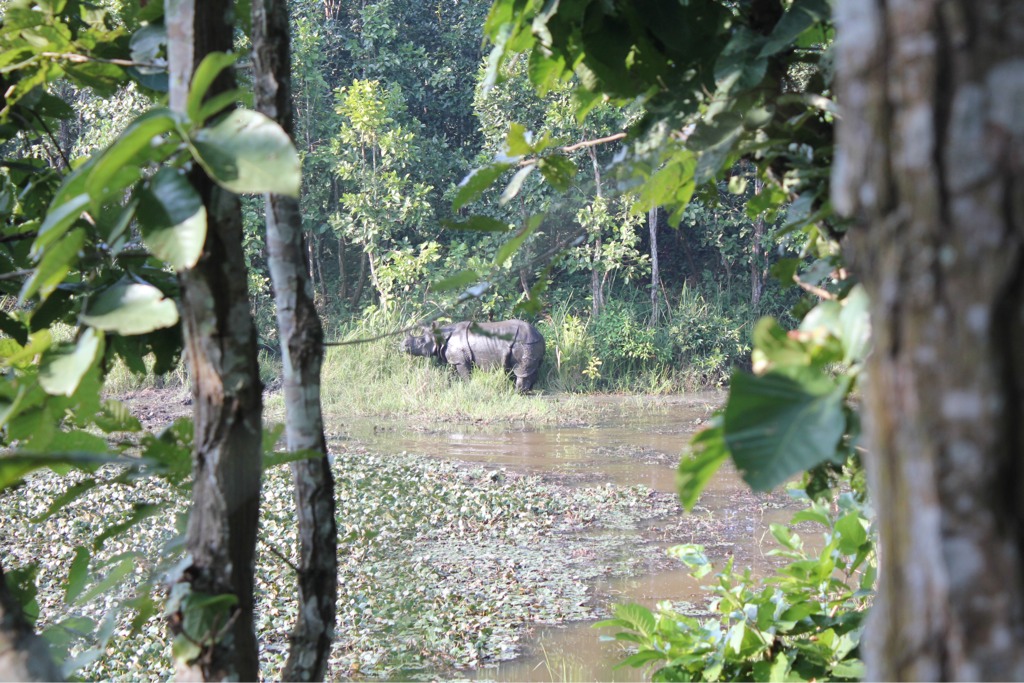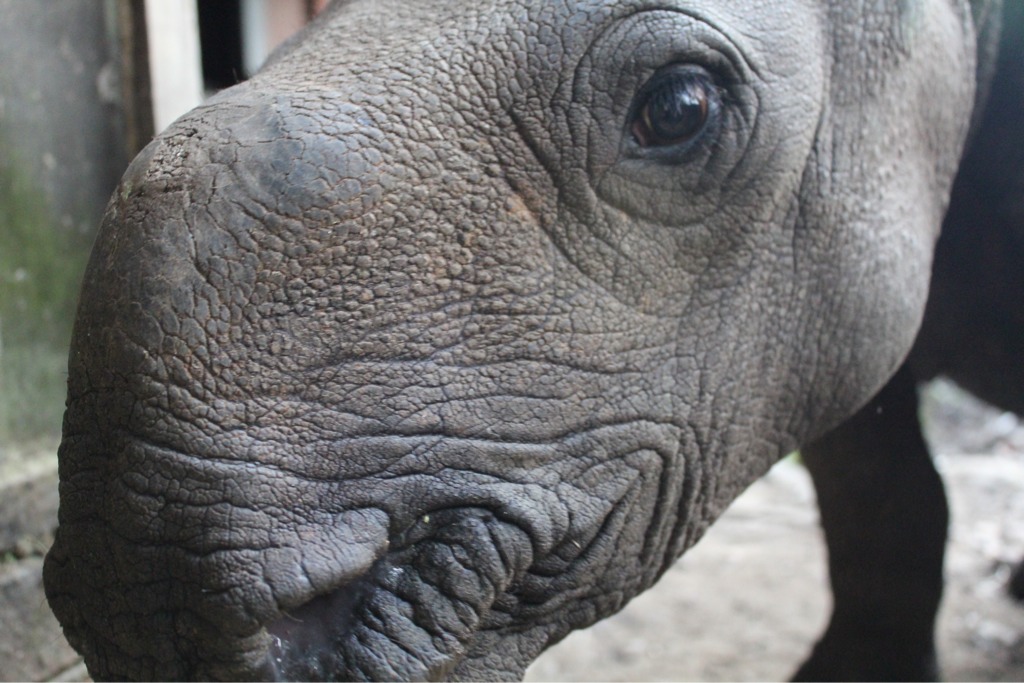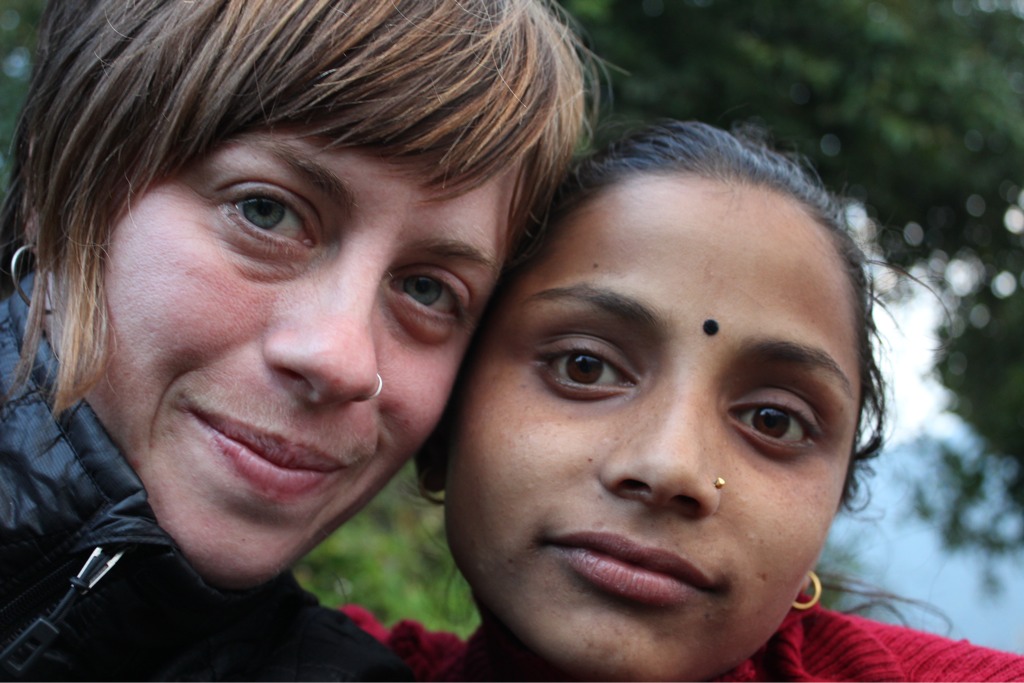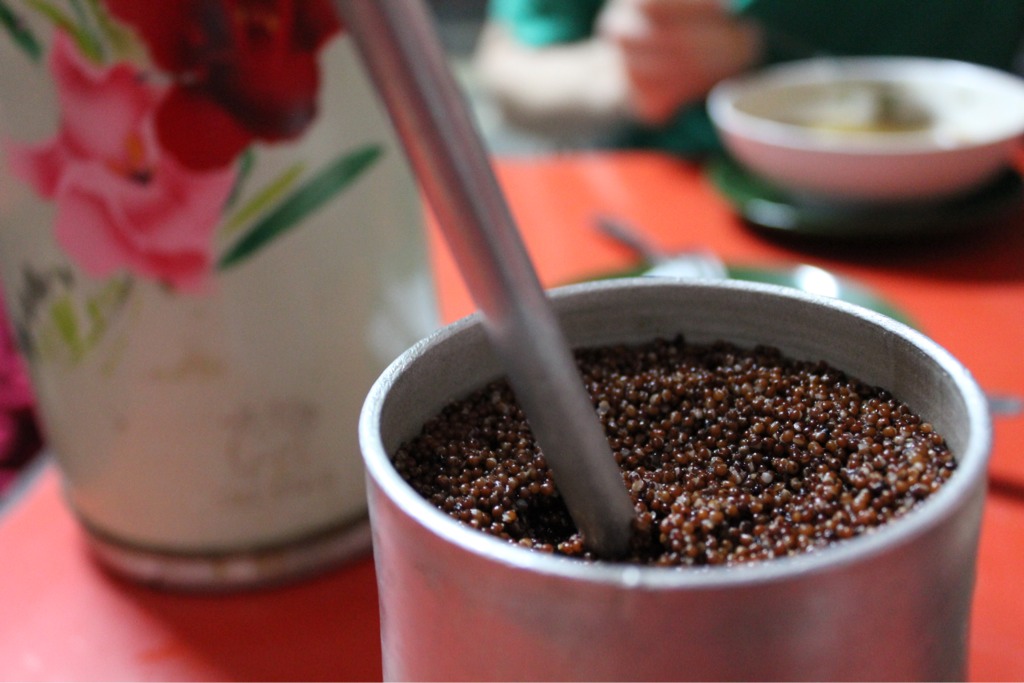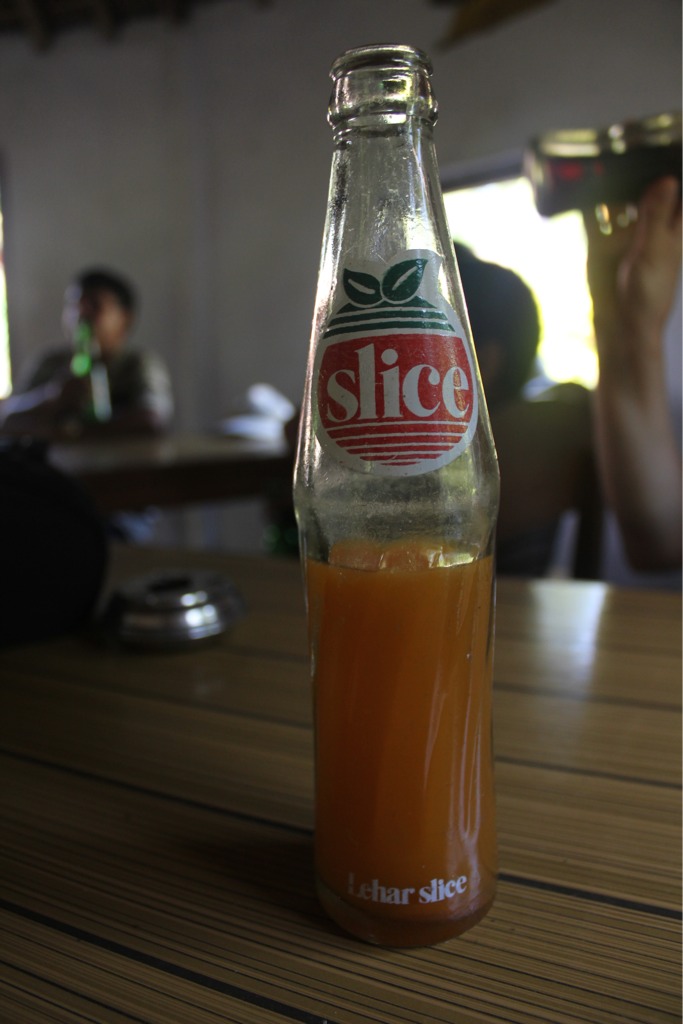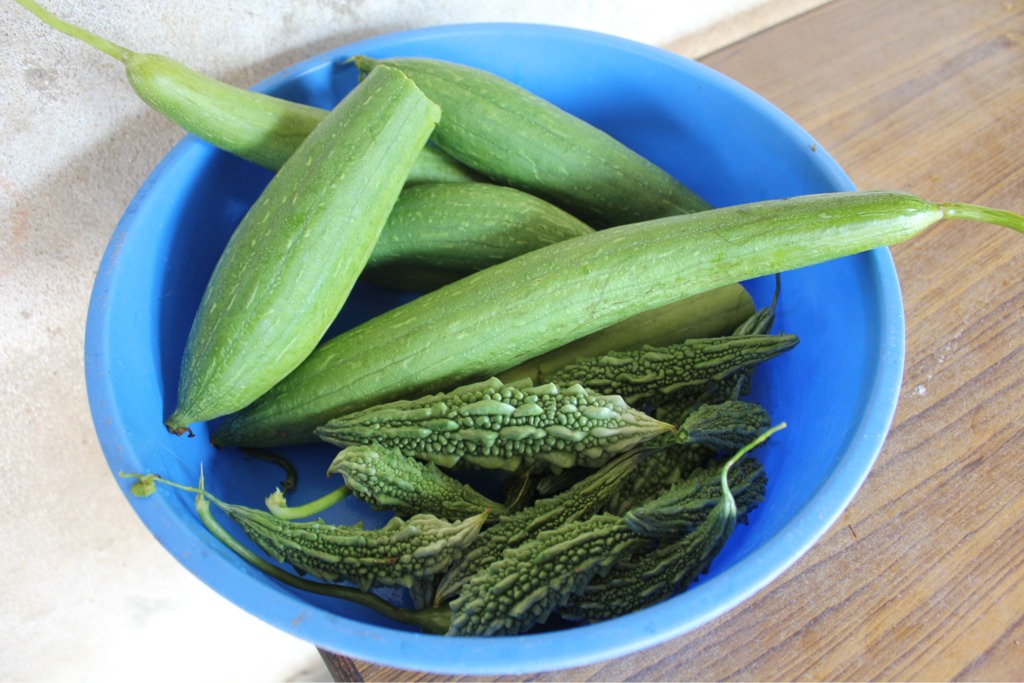By way of the aforementioned hour-long-10km-taxi-bus ride, we arrived to the farm late in the afternoon sweaty and a little sleepy, with dirt in our nostrils and curiosity in our pulses. It was the end of September and, for those of you not in the know, Eli's birthday was the next day (Friday the 30th). After getting settled, receiving a henna tattoo from Dipika and her best friend Monita, enjoying the first of many delicious dal bhat dishes, and being safely under the protection of our mosquito net, we passed out - but not without fleeting wonderings of what was to come with our time here, what makes birthdays really memorable and why we celebrate them anyway, and the new faces and names of those who had invited us graciously into their home floating in front of us in the dark.
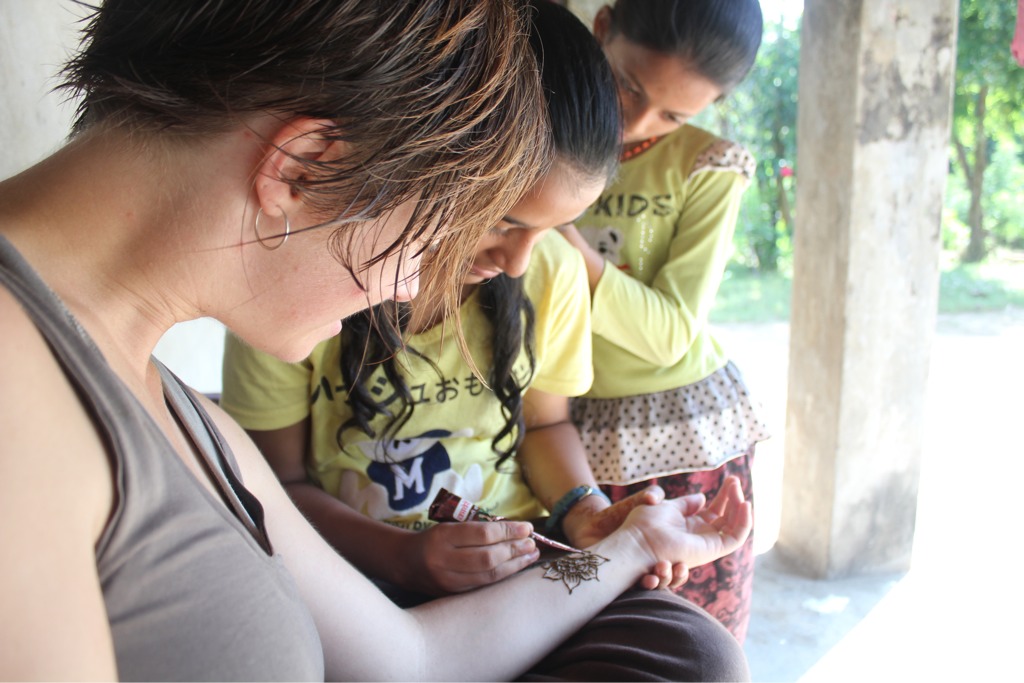
The next day, I helped to grind toasted sesame seeds into a paste in the kitchen. It was satisfying to work with my hands, and particularly so because the grinding was done with a large, smooth rock on a wooden board. In the middle of this meditative prepping, I asked Pramila how, and more importantly if, Nepali people generally acknowledge birthdays. It turns out that many people aren't sure of their exact age or date of birth, particularly of the older generation, so the tradition of celebration doesn't really exist. This is changing somewhat, with the development of medical centers and health/birth awareness, but not at all swiftly. Pramila wanted to know, immediately, whose birthday it was and, cornered, I spilled the beans. This moment seemed casual enough and faded with the morning.
After some exploring in the late afternoon, we ate more dal bhat and cleaned up at the water pump. As dark came, some local kids wandered into the yard...then some more neighbors...then folks from the orphanage next door...then Madalina, a volunteer from Romania who we rode to Sitamai with, strolls in with her host family. We were wondering what was going on, fairly obliviously because of the size (approx. 30-50) of the village and the nature of people to wander in and out. Next, Pramila and Padam dragged a chair out into the middle of the yard and ordered Eli to take a seat. They had invited everyone over for a birthday celebration of Tika giving, music, and dancing! Here is Eli right before that realization...and right after receiving flowers from a stream of people and Tika from Padam.


The general mood of the village was already celebratory thanks to the national holiday of Dasain being just ready to begin. More folks were home for the gatherings, puja (devotional activities) and associated festivities; Eli's birthday was a great way to harness that energy into a night of traditional folk songs (farmer centric), drumming, and the rest. It was near that same night that the moon was to be seen and barley/corn planted, and set to seed in a dark corner of the home. The fun was surprising and exhilarating; we wanted so badly to record some songs, but decided instead to just hang out with the present moment.
Dasain essentially celebrates the victory of gods and goddesses over demons, and does so in intricately timed and highly representative ways. There is also a focus on family and the renewal of community ties during this time, hence the build up of excitement and amount of gatherings during these 15 days. As part of an offering to the goddess Durga, goats are sacrificed nationwide and the blood and meat is considered auspicious. We were invited to, and attended, a sacrifice in the village at 7am. What resonated most with us was not only the commitment to ritual, but the fact that each and every part of this animal was both honored and utilized for two families. They had raised it and they would go on to worship it and their gods by way of this process. (Though the family insisted I could photograph any part of the event, I decided the aftermath was more appropriate for me):
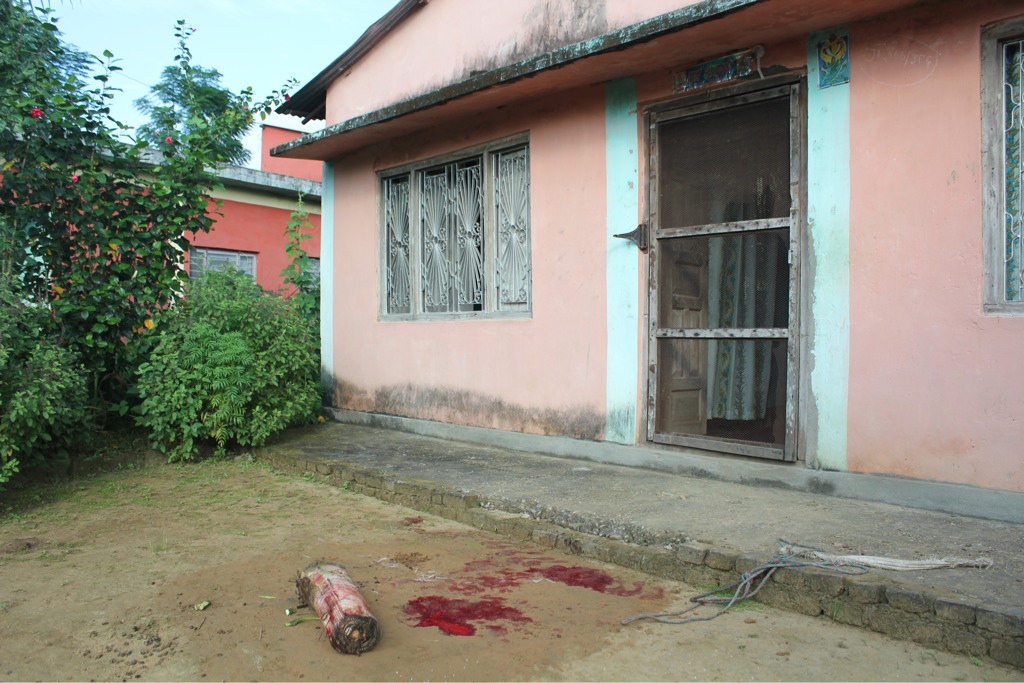
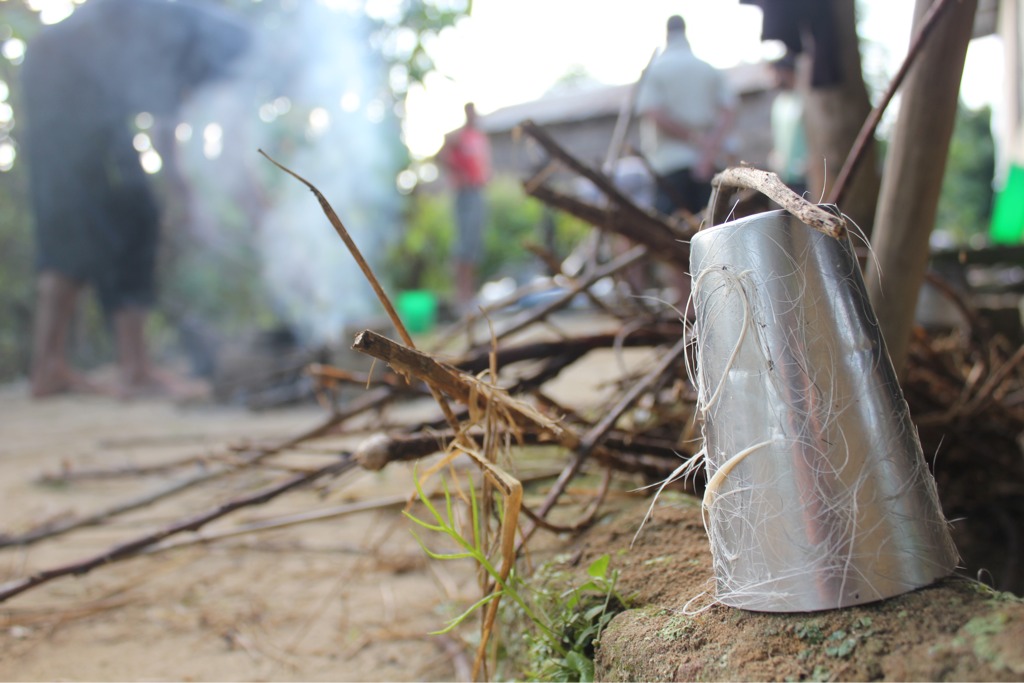
There is an all day Tika event, during which the elders of the families bless others by placing a holy mixture of rice, red dye and curd on the third eye area of the forehead, sprouts from the planted barley/corn are tucked behind ears or in braids, and sharing a specific wish to each person. This happens first in the immediate family and then throughout the village, as most everyone is related where we were staying. Women and men wear new clothes on this day, adding to the official excitement of the day, and we (and Madalina and Corine, another farm volunteer from Switzerland, and Kelli, from Chicago) were not left out of this part:
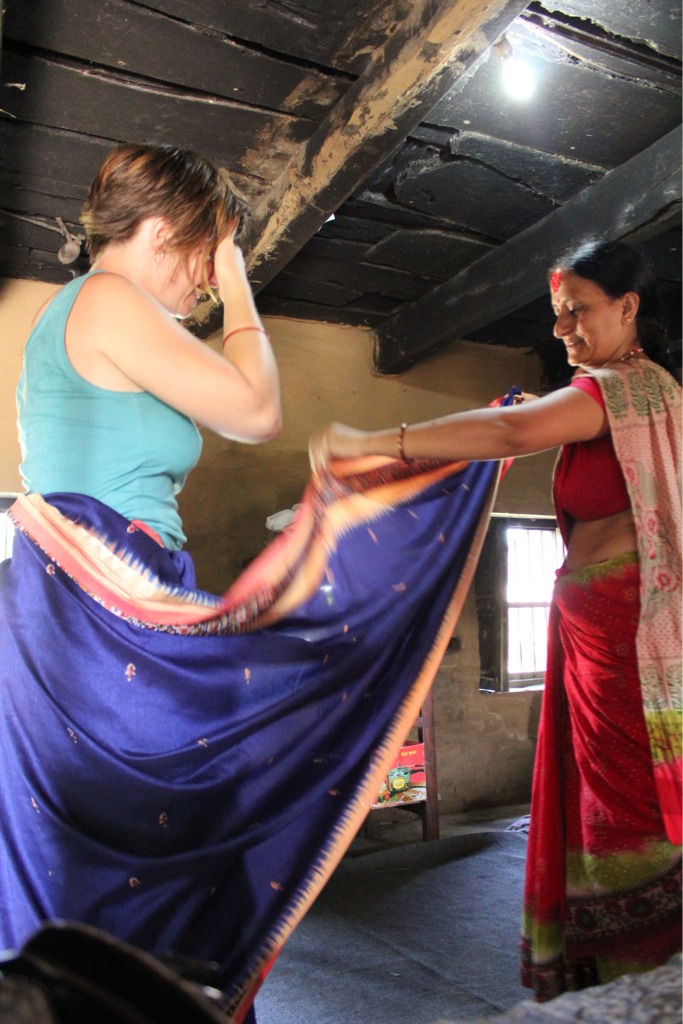
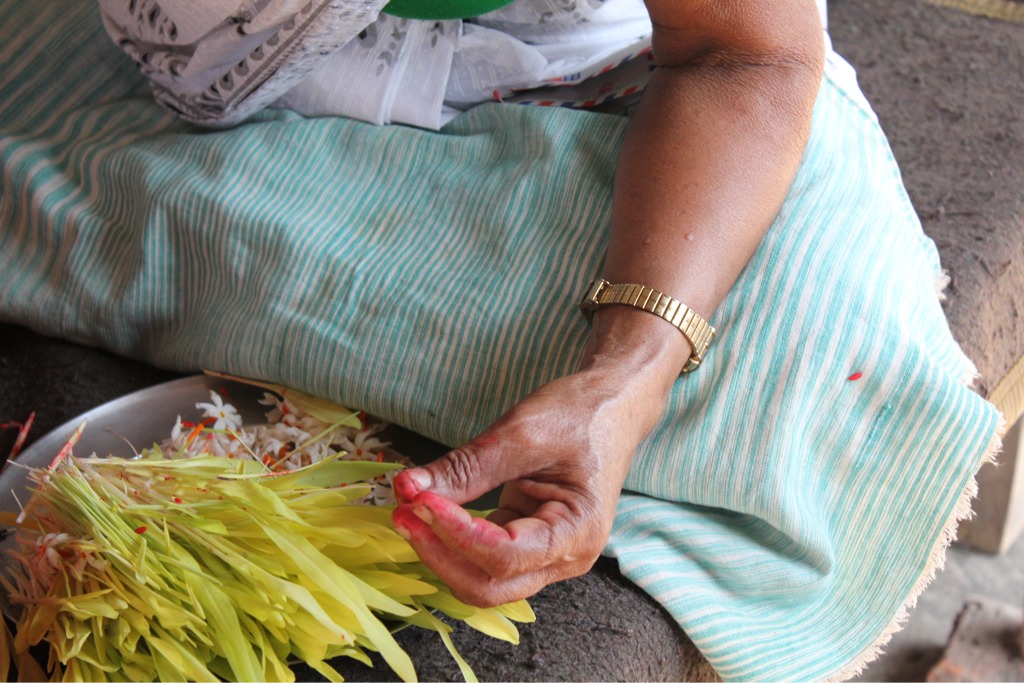
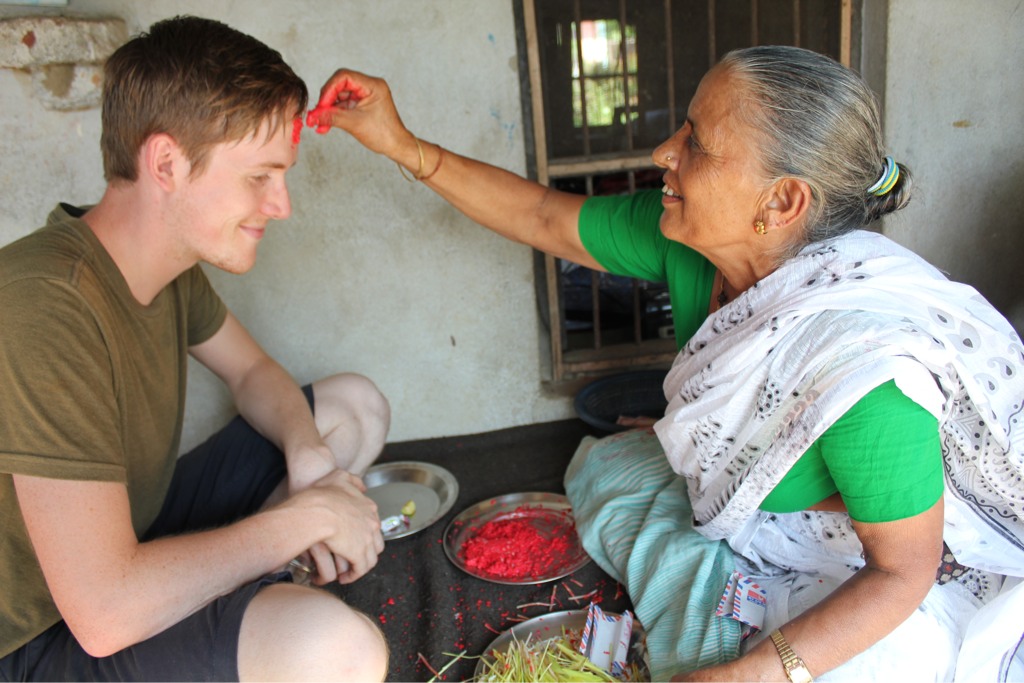
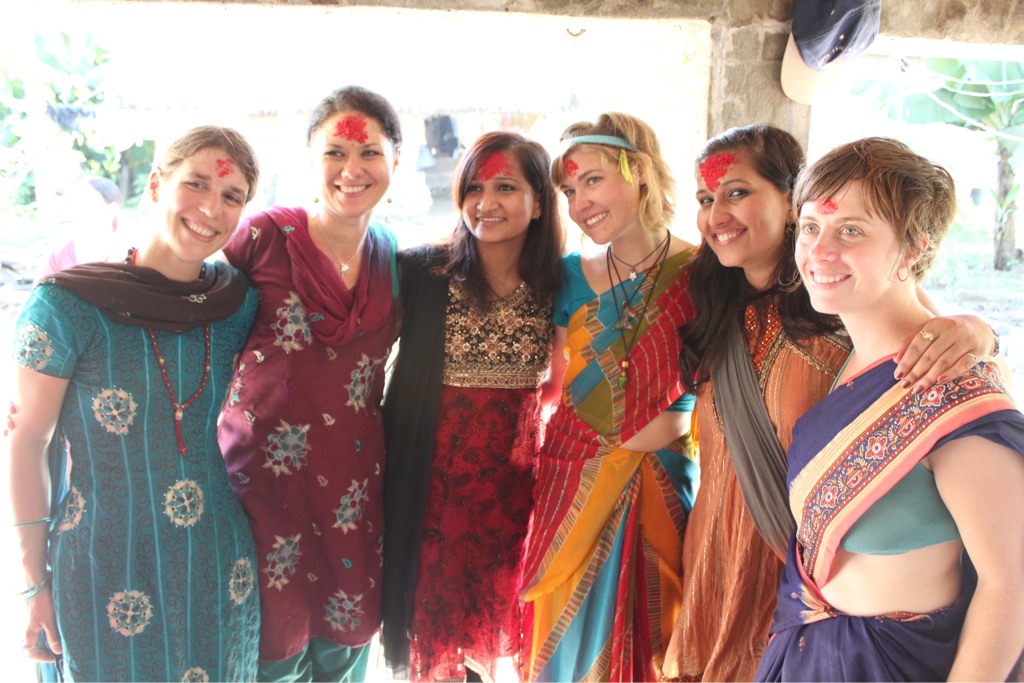
Swings are constructed at the entrances to villages; symbolic and literal vehicles of the requirement to have one's feet leave the earth, particularly on Tika day. They are taken down several weeks later around the time of yet another festival, Diwali. Many we saw, and used, were made of gigantic bamboo poles and rope - and the clear pros were the children and Nepali men of the village, who could stand up and get insanely high. The day we went to visit Pramila's parents (just the girls went), our taxi driver pulled to a stop near one and insisted we all get out and swing. By far the most awesome taxi ride I had in Nepal. Below is our driver, and then Dipika and Monita demonstrating the two-person tandem approach. My form was terrible, but I had fun:
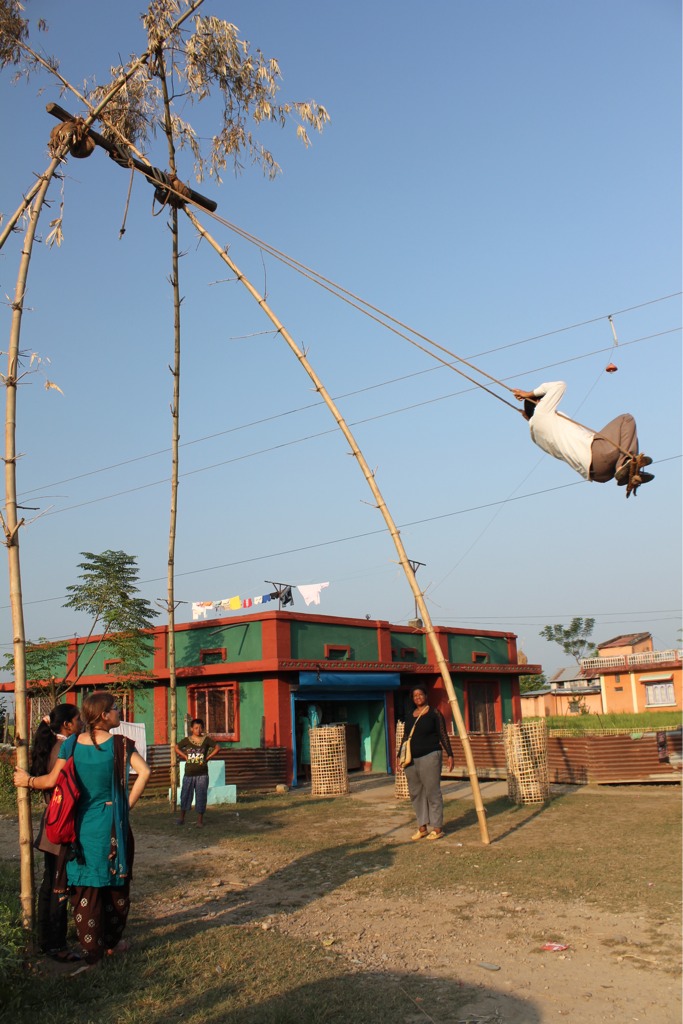

While Nepal is decidedly rich in culture, tradition and ritual year-round, we feel especially lucky to have shared this time with not only a family, but an entire community. The stateside equivalent is inviting someone new (a stranger from another land entirely) into your home for a combination of Thanksgiving, Christmas and New Years. We can only hope to return or pass along the favor, and open door, sometime.
Location:Chitwan, Nepal






